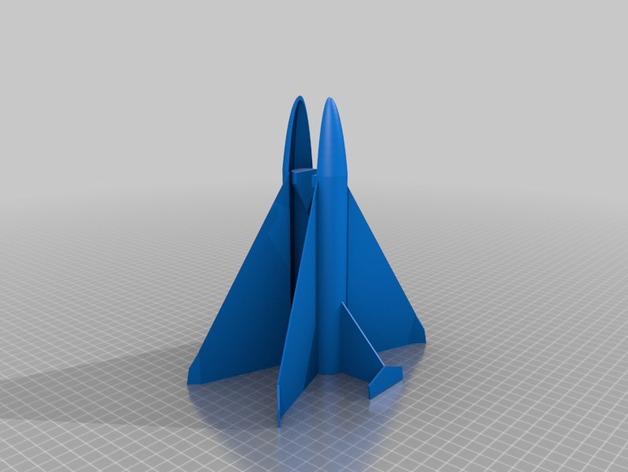
Rocket Plane Glider Set
thingiverse
This cutting-edge design combines two gliders into one Unified Rocket Plane that actually flies and functions flawlessly! This completely innovative work features an inverse nose cone design that keeps the two gliders locked together during initial takeoff, allowing this system to launch like a single rocket and land safely as two separate gliders. When launched, the unified configuration of the two gliders flies straight up due to aerodynamics but separates into individual glider configurations when no thrust is present. These two gliders can be used as a replacement nose cone for any rocket of the same diameter or mounted on top of a bottle rocket, which we've demonstrated here (a much cheaper option if you have access, just remove ordnance or you'll need to replace many gliders). We're currently testing several designs and this is Gen 3. After printing each glider half with each nose cone half, glue the inverse nose cone into the body of each half near the middle, almost to the top (leave a little room for adding weight). Depending on the material and print quality, as well as other factors, it's essential to add clay or another material to equalize the weight in the cavity space between the inverse nose cone and the tip of each half. The two gliders must weigh the same, and each half of the nose cone should be precisely aligned so they create one Rocket Plane. Hold the glider halves together and insert a model rocket or bottle rocket of 1-inch diameter into the center, pushing the body of the rocket onto the inverse nose cone inside which holds the two halves together (while standing upright or during launch). Print Settings Printer: XYZ Pro Rafts: No Supports: No Resolution: Any Infill: NA Notes: Try to print with light materials possible; we're testing with ABS. Aim for a total weight of about 1 oz for a B class rocket engine (B6-4). How I Designed This 3D Printing Unlocks Possibilities This design has been in development for over a decade, with numerous tweaks and refinements. Until recently, material and construction limitations hindered the realization of intricate designs. 3D printing provided the perfect solution to bring this vision to life. The goal is to create a simple way to launch gliders quickly and have them fly consistently every time. While many designs have achieved this, this particular design stands out by replacing the nose cone with two gliders that work together to achieve aerodynamic properties similar to those of a rocket. When thrust is absent, they separate into two distinct glider configurations. Testing Our Design! Continued Testing and Design Improvements We're actively flying and testing designs, creating videos for Thingiverse. Recent tests confirm that it will fly but requires precise alignment; otherwise, it veers off course. We've only conducted low-power tests using an A equivalent engine at altitudes of 50 to 80 feet with a bottle rocket and no fireworks. Here are some videos we managed to capture...we'll do better next time! Note that when the gliders aren't aligned perfectly, the rocket tends to veer in the direction of the lower glider. We're working on an improved design that will automatically align the gliders due to acceleration by slightly indenting the inverse nose cone halves and lengthening the slope. Although the gliders don't glide well and it's more of a controlled descent, they're still cool and easy to retrieve since they don't travel far.
With this file you will be able to print Rocket Plane Glider Set with your 3D printer. Click on the button and save the file on your computer to work, edit or customize your design. You can also find more 3D designs for printers on Rocket Plane Glider Set.
